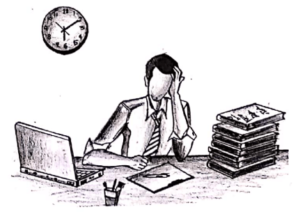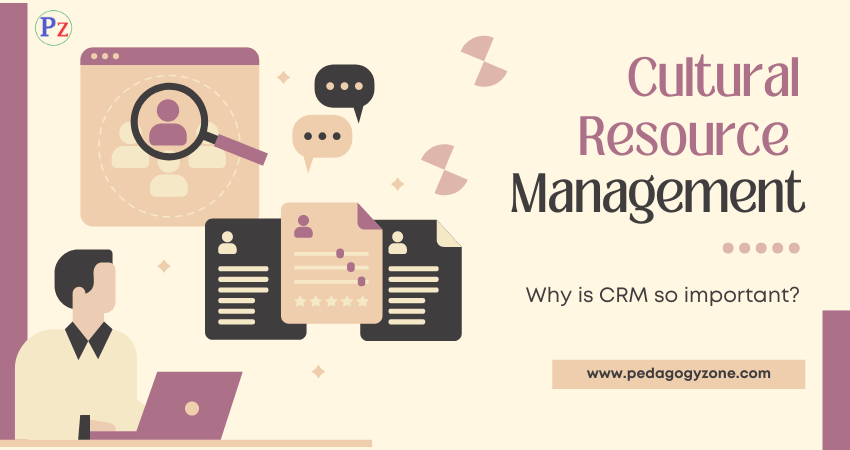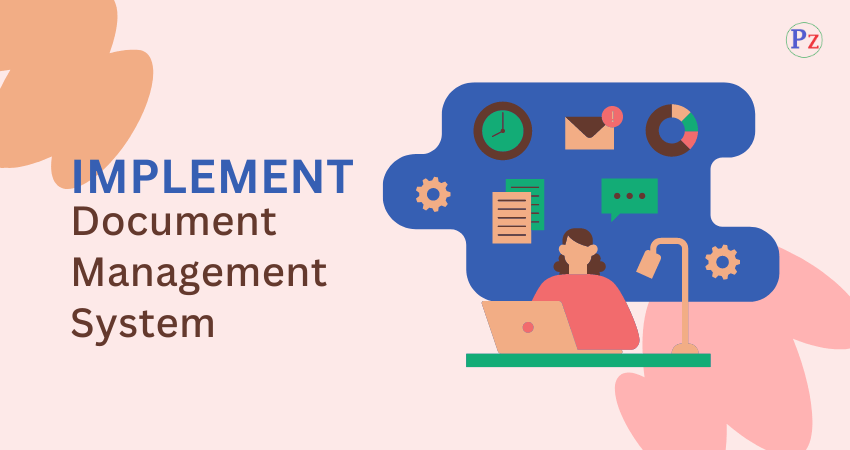Introduction
The origin of the concept of stress predates antiquity. Derived from the Latin word ‘stringere’ stress was popularly used in the seventeenth century to mean hardship, strain, adversity, or affliction. It was used in the eighteenth and nineteenth centuries to denote force, pressure, strain, or strong efforts with reference to an object or person.
Definition
According to Hans Selye, “Stress is an adaptive response to an external situation that results in physical, psychological, and behavioral deviation for organizational participants.”
According to Beehr Newman, “Stress is a conditioning arising from the interaction of people and their jobs and characterized by changes within people that force them to deviate from their normal functioning.”
Relationship between stressor and stress
The environment stressor – Individual stress
|
♦ Perception ♦ Past experience ♦ Social support ♦ Individual difference |
Causes or sources or reasons for stress/stressors
-
Environmental Causes – Family demands and obligations, fast technological change, economic and financial conditions, race, caste, class, ethnic identity and relocation and transfers, excessive noise, poor lighting, safety hazards, poorly designed office space, lack of privacy, poor air quality also causes stress.
-
Organizational Causes – Organizational policies, procedures, structures, culture and climate, management styles, organization design, organizational life cycle, unfair performance evaluation, rotation of work, leadership styles, inequality in remuneration and incentives are causes of stress.
- Group Causes
(i) Lack of Group Cohesiveness(ii) Lack of Social Support(iii) Interpersonal and Inter Group Conflict(iv) Managerial Behavior(v) Sexual Harassment(vi) Work Place Violence
-
Individual Causes(i) Role Conflict(ii) Role Ambiguity (Confusion’s On Role)(iii) Work Load(iv) Life Event’s(v) Personality Traits(vi) Task Characteristics
Symptoms of stress/outcome of stress
-
Psychosomatics – physical or mental
-
Psychological- anxiety, depression, helplessness, hopelessness, and anger
-
Behavioral Symptoms – such as turnover, accidents, absenteeism, performance, satisfaction.
-
Cognitive – Poor decision making
– Lack of concentration
– Forgetfulness
- Physiological
Measurement of stress
In India two techniques are used to measure stress of employees
(i) Organizational Role Stress-ORS
(ii) Occupational Stress Index – OSI.
- Role Space- The dynamic interrelationship between the self and the various roles an individual occupies (example a person can play a role of father, son, executive, husband, club member).
- Role Set- the pattern of relationship between the role being occupied and other roles related to an individual.
According to Pareek ten types of organizational role stress occur
-
-
Inter- role distance
-
Role erosion – Feeling of role given to others.
-
Role expectation conflict
-
Role overload
-
Role stagnation
-
Role isolation – felt distance
-
Personal inadequacy
-
Self – Role distance
-
Role Ambiguity
-
Resource Inadequacy .
-
(ii) Occupational Stress Index: Is an instrument to measures stress was constructed by Sri Vastara & Singh Index measures twelve different types of Occupational Stress:
-
-
-
Role Overload
-
Role Ambiguity
-
Role Conflict
-
Group and Political Pressures
-
Responsibility For Persons
-
Under Participation
-
Powerlessness
-
Poor Peer Relations
-
Unprofitability
-
Low Status
-
Intrinsic Improvements
-
Strenuous Working Conditions
-
-
How to manage stress (or) prevention and management of stress
Various Strategies Classified into two broad categories to Reduce or Manage Stress
1. At individual level
- Physical exercise – Muscle relaxation, walking, jogging, swimming, riding, bicycling or playing games helps people combat stress
- Behavioral self-control- Own behavior help managers controlling the situation instead of letting the situation control them
- Social support – Such as money, material and emotional help. Adequate social support may reduce intensity and frequency of stressors
- Yoga and meditations- Psychological well being of people
- Changing gears- Shifting ones attention from main work to something else, such as a hobby
- Pampering oneself-We pamper others when they experience a crisis in life. We send flowers to a friend who is admitted in the hospital struggling with his life and death
- Warming up oneself- A manager also needs to warm up before starting work just as the football player warms up before the buzzer sounds to start the game
- Rearranging one’s job schedule- Confront difficult tasks when one is fresh
- Time management- Pre planning
2. At Organizational Level
- Setting clear objectives- of organization
- Stress audit- organization makes to study, explore, and control various types of stress
- Counseling- for employees regarding career planning’s, job roles, and strength and weakness
- Spread the message- importance of regular habits of work, leisure, proper diet, exercise and mental peace among the organizational members
- Fit between person and work
- Clarity in Roles
- Change in work schedule
| Read More Topics |
| Role of HR managers in present times |
| Problems in HRA reporting |
| Frequently used shortcuts in judging other |





